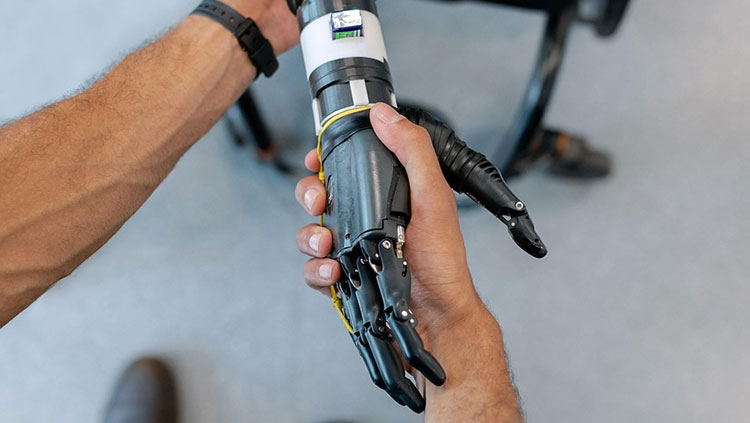ICYMI: Brain Implant Turns Imagined Words Into Text on a Screen
- Published7 Jun 2021
- Author Alexis Wnuk
- Source BrainFacts/SfN

Electrodes implanted in a paralyzed man’s brain decoded his thoughts and turned them into text on a screen, researchers reported May 12 in Nature. They asked the man, who experienced a spinal cord injury in 2007 and was paralyzed from the neck down, to imagine slowly writing letters and words. Two brain-computer interface devices implanted in his brain recorded electrical activity in an area of the motor cortex that controls hand and arm movements. Using a computer algorithm, the researchers figured out the unique patterns of neural activity corresponding to specific letters. The algorithm decoded these signals to generate text on a screen. Using his thoughts, he “typed” 90 characters per minute, just shy of the average texting speed for older adults.
Related: Brain-Machine Interfaces: Converting Thoughts Into Action
Read more: New Brain Implant Turns Visualized Letters into Text. Scientific American
More Top Stories
- Sharks use the Earth’s magnetic fields to navigate. Wired
- A gene-editing technique partially restored vision in a blind person. STAT
- Using a robotic extra thumb changes the brain’s body map. Science News
- Overwork killed more than 745,000 people in 2016. NPR
- This bird-like dinosaur had extraordinary night vision. Vice
- Amazonian monkeys use different “accents” to enhance communication with other species. The Guardian
- MDMA improves symptoms in people with severe PTSD. Science News
- Touch feedback makes it easier for people to use brain-controlled robotic arms. Wired
- The number of people who smoke has reach an all-time high. The Guardian
- Physical activity helps kids develop skills for success. Healthline
- Weird dreams may help us make sense of our experience and process information. Inverse
CONTENT PROVIDED BY
BrainFacts/SfN
What to Read Next
Also In Neuroscience in the News
Trending
Popular articles on BrainFacts.org









.jpg)









